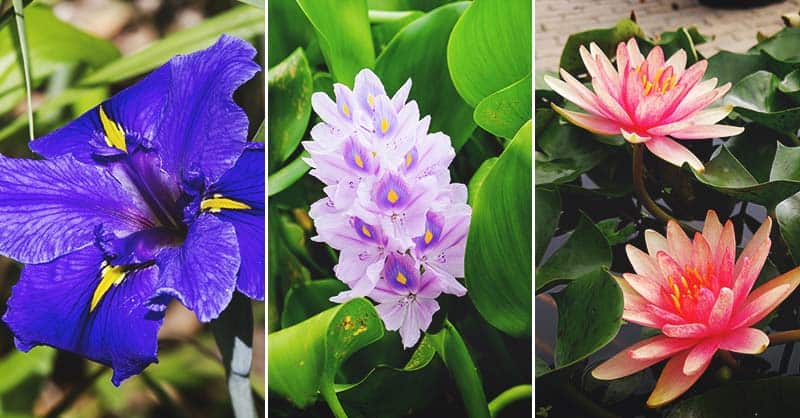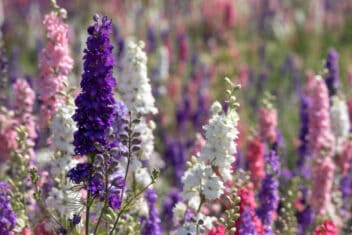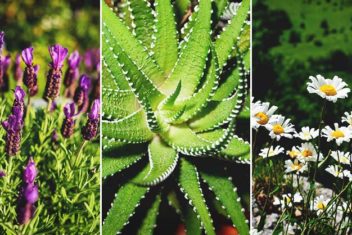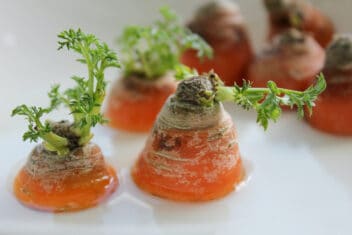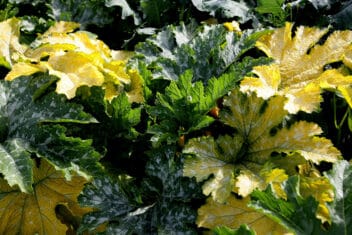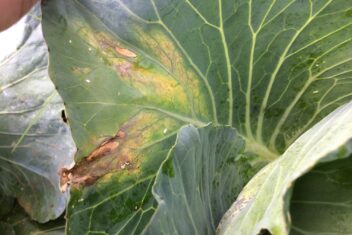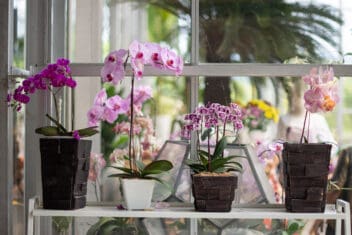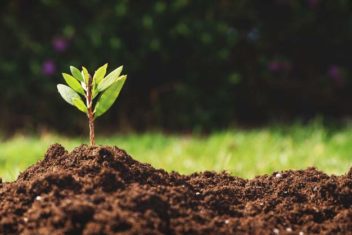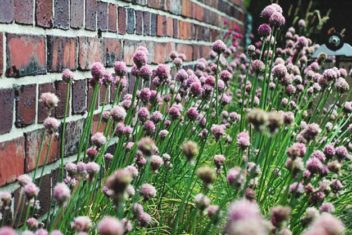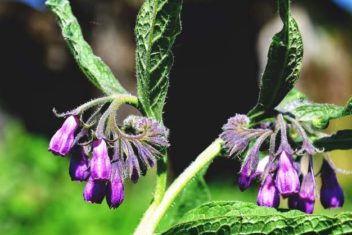Ponds and water features add a wonderful layer of interest to your garden, indoors or out, but they can look a little bare if nothing grows in them. In fact, a water feature won’t thrive to its full potential without some flora. That’s because water plants serve an important function, including providing cover for fish, land mammals, birds, and insects. They also filter the water, prevent the build-up of algae and help to oxygenate the water.
On top of the ecological role they perform, water plants add color, texture, and depth to your garden. A pond surrounded by cattails, taro, and arrow arums, and filled with water lilies and ferns, is a much more interesting place to be than a barren pond.
There are three main sub-groups of water plants. Those that live on top of the water, those that live on the edges of the water, and those that are fully submerged under the water. These are categorized as:
- Floating
- Marginal
- Submerged
For a natural look, use a few plants from each category.
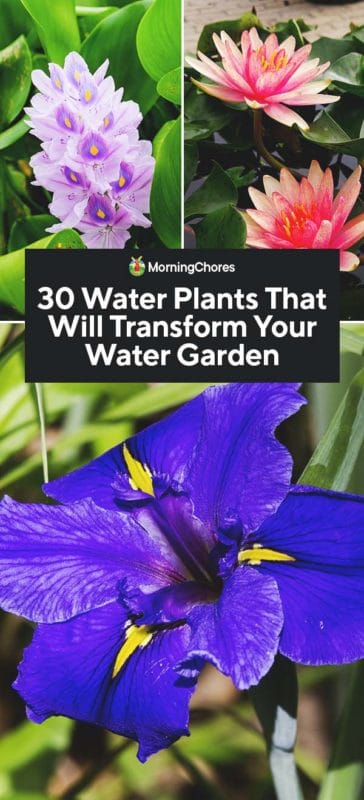
Benefits of Water Plants
- Water Filtration – Plants remove nitrates from the water and produce clean oxygen. If you have fish in a pond you need plants to help deal with their waste.
- Improves Oxygenation – Submerged plants produce large amounts of oxygen keeping the water and fish healthy. Submerged plants also give your fish somewhere to hide.
- Algae Control – Water plants use nutrients otherwise used by algae. The right plant balance will help you avoid excess algae growth.
Outdoor Floating Plants
Floating plants sit on the surface of the water and move with the flow. They don’t need to be anchored in the soil. If you need to reduce sunlight into the water to prevent algae growth, floating plants are the solution. They can also cool the water when it’s warm.
Don’t overdo it, though. Leave at least half the pond surface clear to enable natural gas exchange.
Floating plants generally don’t do too well during frigid winter temperatures, so move them into a warm area indoors or in a greenhouse to wait until spring.
There is a huge variety of floating plants, so I’ve chosen the ones I have personally used in the water features and ponds on my land. I know that these plants can survive without too much maintenance and have a big visual impact on a garden.
1. Water Lettuce
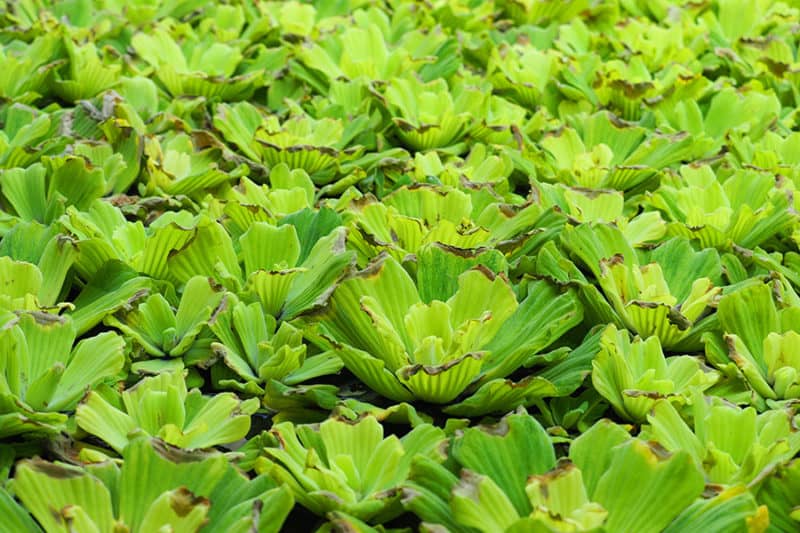
This plant is a lovely, deep green in the peak of summer. It grows in little rosettes along the surface, and because it’s a fast grower, it’s excellent for cooling the water and to control algae because it absorbs large amounts of nutrients that algae need.
Water lettuce is an annual that will die off in winter, so move it inside when it gets cold.
- Zones: 9-11
- Scientific name: Pistia stratiotes
- Size: 2-4 inches high
- Sun: Full sun
2. Water Hyacinth
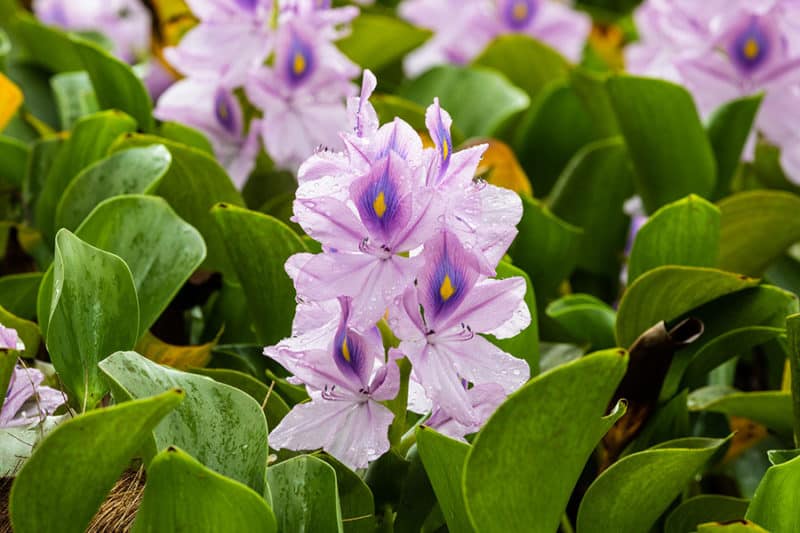
Water hyacinth grows so quickly that if you have a small pond, you’ll need to cut it back now and then. It grows big and produces lovely flowers in a variety colors, most commonly white or purple. It’s a champion at filtering water.
- Zones: 9-11
- Scientific name: Eichhornia crassipes
- Size: 25-inches wide
- Sun: Full sun to full shade
3. Dwarf Water Lily
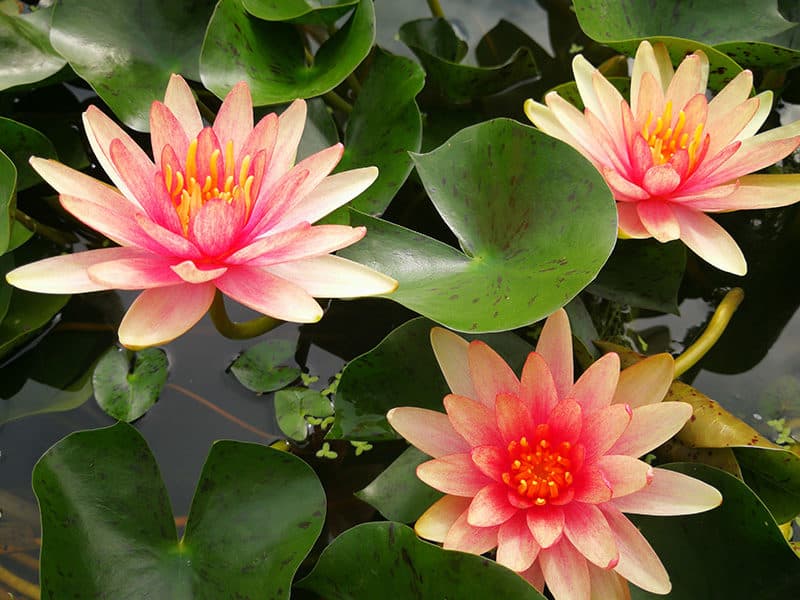
I use dwarf water lily in my ponds because I like the look of regular water lilies, but they’re too big for the size of ponds I have.
Dwarf water lily does best in water between 1-18 inches in depth. They have delicate rhizomes, so avoid planting in rocks where they’ll be damaged. On the bright side, if they multiply too much, they’re easy to extract.
Dwarf water lily comes in a variety of colors and looks like regular sized water lilies, only smaller. This plant comes in both tropical and hardy varieties.
- Zones: 4-11
- Scientific name: Nymphaea leibergii
- Size: Under 5-inches
- Sun: Full sun to partial shade
4. Water Poppy
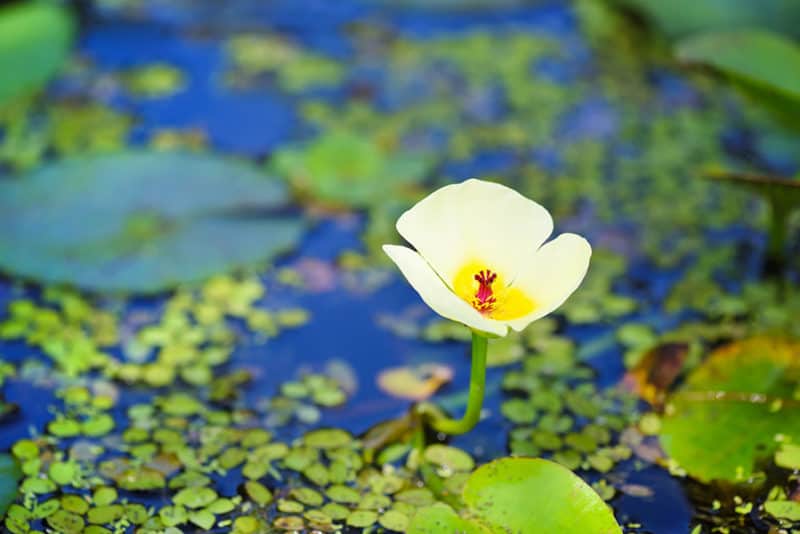
Water poppies add cheery color to a water garden. The plant features lily-like pads of glossy green leaves and blooms with bright yellow flowers all summer long.
- Zones: 9-11
- Scientific name: Hydrocleys nymphoides
- Size: Flowers up to 3-inches, spreads 2-feet
- Sun: Full sun to part shade
5. White Snowflake
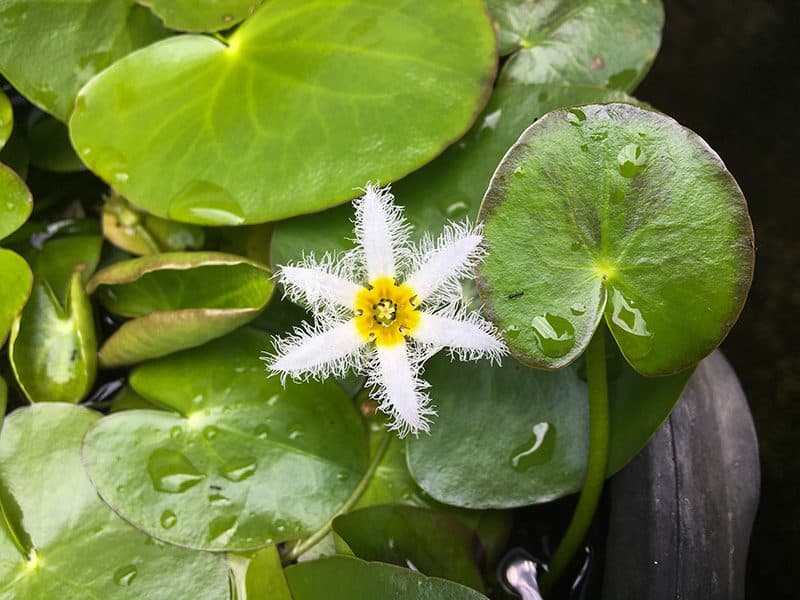
I’ve used this plant as a floating marginal plant in water about 12 inches deep. This produces lovely green pads with bright white flowers. In full sun, the flowers will bloom and in partial shade, you’ll just get foliage.
Beware though – when I planted this, it got out of control. Make sure you keep an eye on its growth and cut back when necessary. In some areas, it’s considered an invasive species.
- Zones: 7-11
- Scientific name: Nymphoides spp.
- Size: Spread up to 24-inches
- Sun: Full sun to partial shade
6. Water Fern
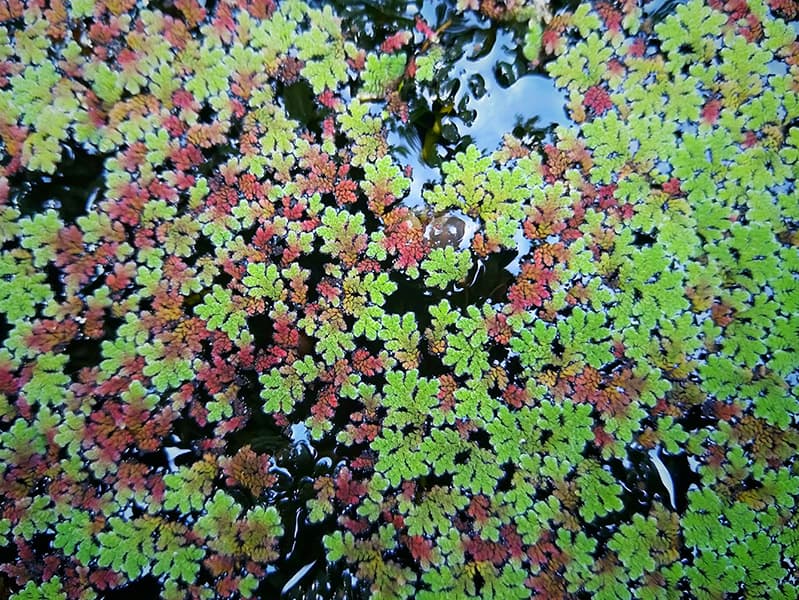
Water fern forms dense mats on top of the water. It adds beautiful texture and color to a pond as the leaves turn from gray-green to red over the growing season. Use caution: water fern can be invasive, so plant it in contained gardens. It’s native to the southern United States, primarily Florida. It prefers still or calm water.
- Zones: 7-10
- Scientific name: Azolla filiculoides
- Size: 3-inches tall, indefinite spread
- Sun: Partial shade to full sun
Outdoor Marginal Plants
Marginal plants are used on the edges of water to give a more natural aesthetic to the shape of your pond. They can be used for algae control because the edges where the water is more shallow and warm is where algae like to grow best.
I prefer to use an 8-inch water basket, with the plant sitting in shallow water, but you can plant straight in the soil. Marginal plants can grow in shallow water or moist earth.
7. Chameleon Plant

This is by far my favorite marginal plant because it attracts loads of bees and butterflies. It has multi-colored leaves and white flowers. Also known as fish leaf, heart leaf, or Bishop’s weed, it’s fuss-free in the garden.
Plant in a water basket and make sure you trim the roots around the sides to limit the growth because these grow faster than any other marginal plant I’ve used before. Because of such rapid growth, Houttuynia uses a lot of nutrients – hopefully starving algae.
- Zones: 4-10
- Scientific name: Houttuynia cordata
- Size: Up to 1.5 feet tall and 2 feet wide
- Sun: Full sun to part shade
8. Corkscrew Rush
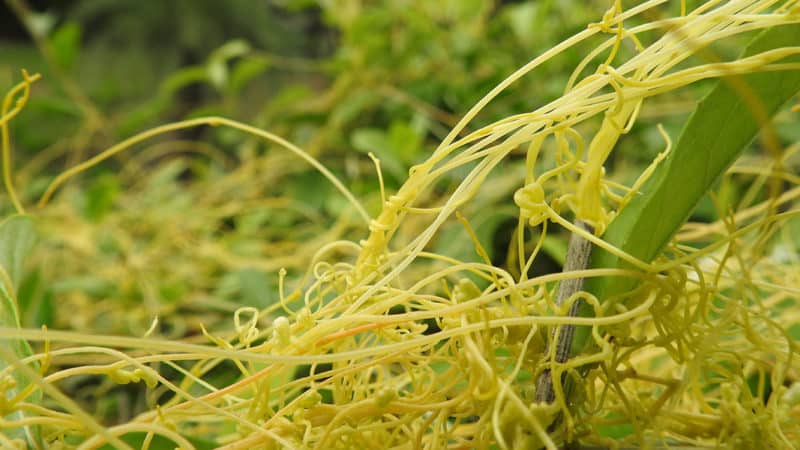
I like this small rush because it doesn’t get to the height of a standard rush. It has thin green stems that spiral and twist and it gives a unique aesthetic to your water feature.
I use a water basket and I’ve never really had to trim this rush back.
- Zones: 4-10
- Scientific name: Juncus effusus f. Spiralis
- Size: Up to 18-inches tall and wide
- Sun: Full to partial sun
9. Creeping Jenny
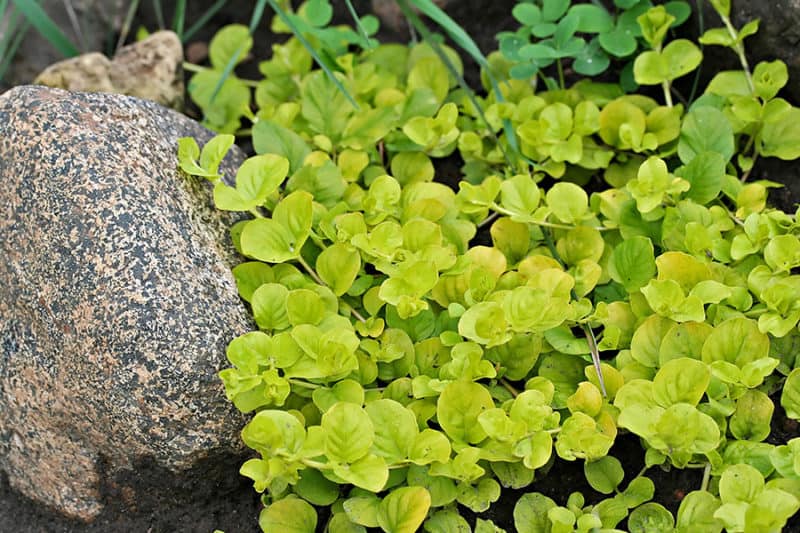
This is one cool looking plant thanks to its glossy, round leaves that range from golden yellow to deep green. It likes to grow on logs or rocks at the edge of the water, and it isn’t invasive, though it’s a quick spreader. It has never extended far into my pond, so it has been low maintenance for me.
- Zones: 3-7
- Scientific name: Lysimachia nummularia
- Size: Up to 8-inches tall and 2-feet wide
- Sun: Full sun to partial shade
10. Arrow Arum
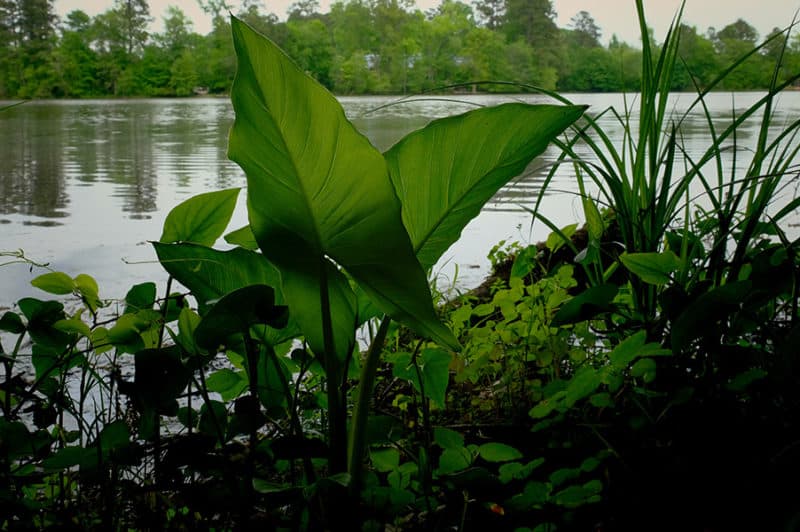
Native to the Eastern United States and Canada, the dark green, arrow-shaped leaves of this plant add an attractive texture to a water garden. Arrow arum – also known as tuckahoe – grows in shallow areas and at the edges of ponds.
- Zones: 5-9
- Scientific name: Peltandra Virginica
- Size: 2-3 feet tall and wide
- Sun: Partial shade to full sun
11. Horsetail Reed
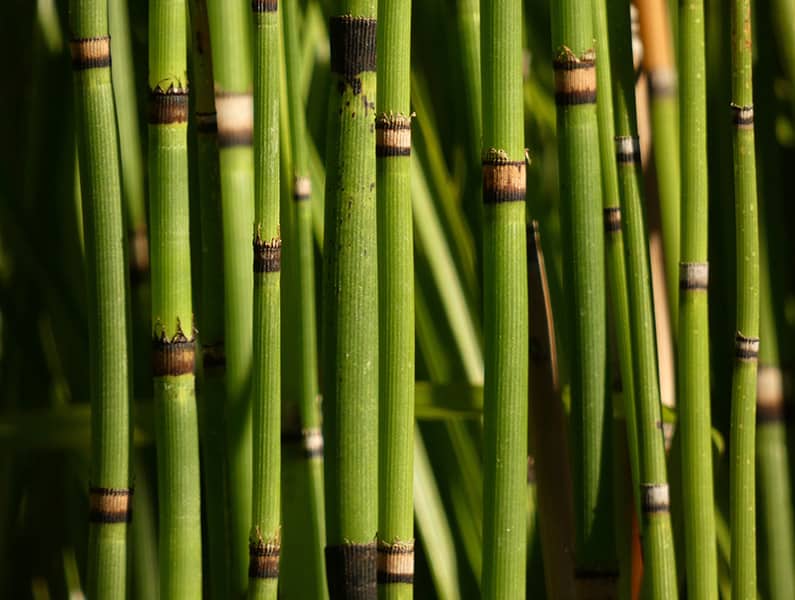
Horsetail reeds add year-round color to a water garden. They’re perfect for an area that has poor drainage, or in a contained pond.
- Zones: 3-11
- Scientific name: Equisetum hyemale
- Size: 4-3 tall, indefinite spread
- Sun: Partial
12. Marsh Marigold
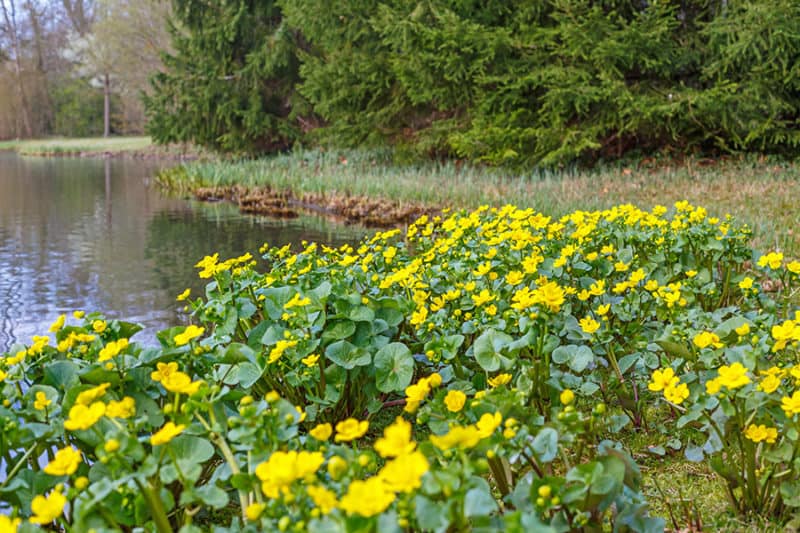
This perennial herb is in the buttercup family. The glossy green leaves are topped by cheerful yellow flowers in the spring. Also known as Caltha cowslip, this plant is toxic to cattle and horses. It can grow in up tot 6-inches of water.
- Zones: 3-7
- Scientific name: Caltha palustrisL
- Size: 8-24 inches tall
- Sun: Full sun to light shade
13. Sweet Flag
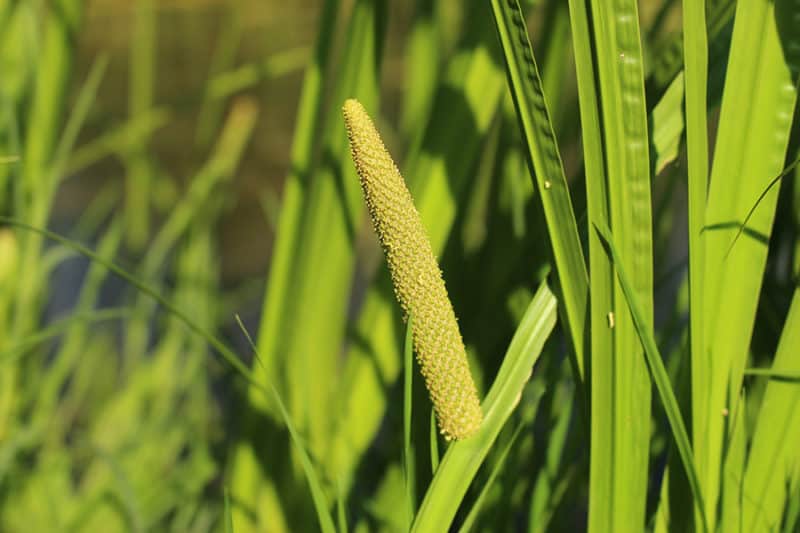
Sweet flag has dramatic, bright foliage and requires little maintenance. It’s semi-evergreen and smells incredible if you step on it, so plant it near a walkway. Though it prefers sun, it can even brighten up a shady area – though it won’t grow as quickly.
- Zones: 5-11
- Scientific name: Acorus gramineus
- Size: 10-inches tall, 4-6 inches wide
- Sun: Partial shade too full sun
14. Louisiana Iris
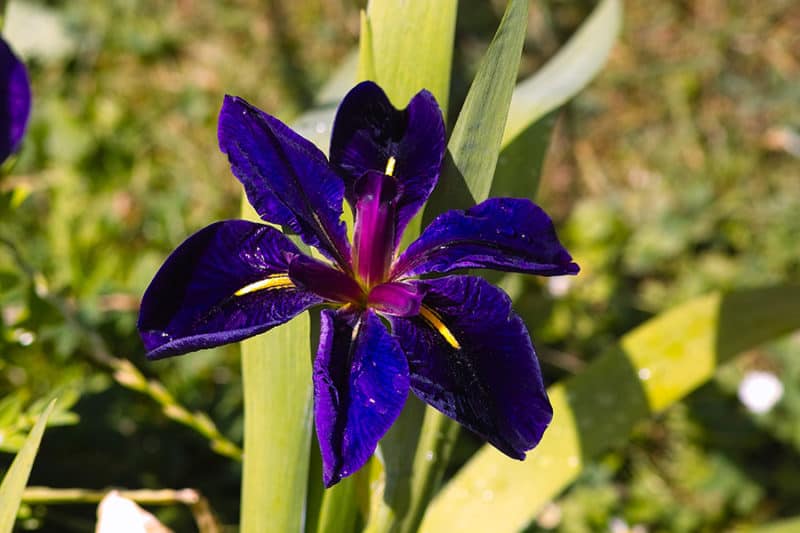
This beautiful plant is native to the southeastern United States. They come in a wide range of colors, with big, showy blossoms on tall stems. There are five distinct species of this plant, though they readily breed with one another.
- Zones: 6-11
- Scientific name: Iris spp.
- Size: 2-3 feet tall when blooming, 3-feet wide
- Sun: Full sun
15. Water Canna
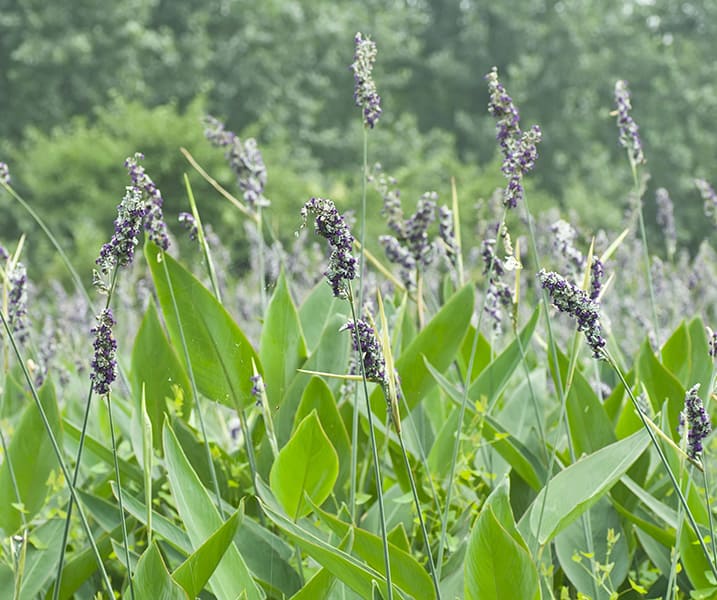
The bold leaves of this pretty plant have a dark purple dot at the base, making them a striking addition to a water garden. When in bloom, it features clusters of purple flowers.
- Zones: 8 and up
- Scientific name: Thalia dealbata
- Size: 4-feet tall
- Sun: Full sun to partial shade
16. Bog Bean
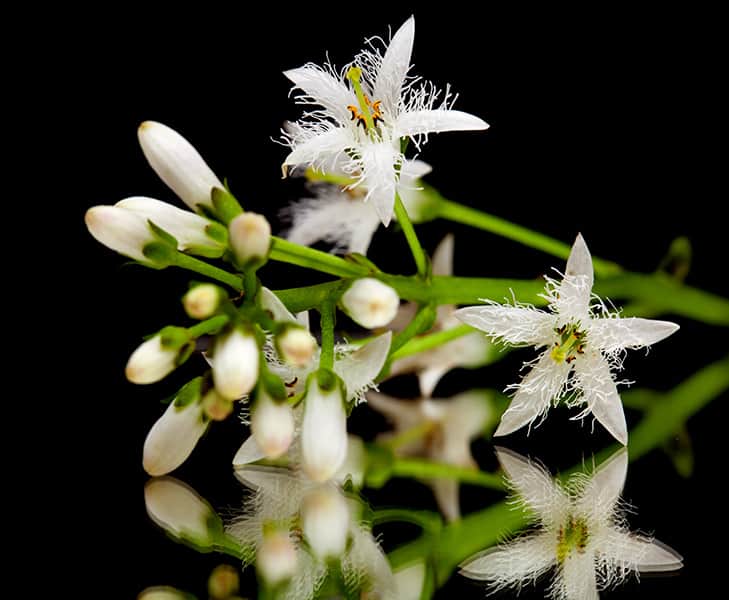
Also known as water shamrock and buckbean, bog bean grows native in the U.S. and Europe, adding texture and color to wet areas. It blooms with spikes of fringed white and pink flowers from April to July. Watch out, though, because it can be invasive. Grow it in contained areas.
- Zones: 2-11
- Scientific name: Menyanthes trifolia
- Size: 6-inches tall, 60-inches wide
- Sun: Full sun to partial shade
17. Parrot’s Feather

The feathery fronds of Parrot’s feather are striking along pond borders. These plants can be invasive, so use caution when planting. In fact, some states have even outlawed it because it spreads so quickly.
- Zones: 5-11
- Scientific name: Myriophyllum aquaticum
- Size: 6-inches tall, 5-feet wide
- Sun: Full sun to partial sun
18. Cattail
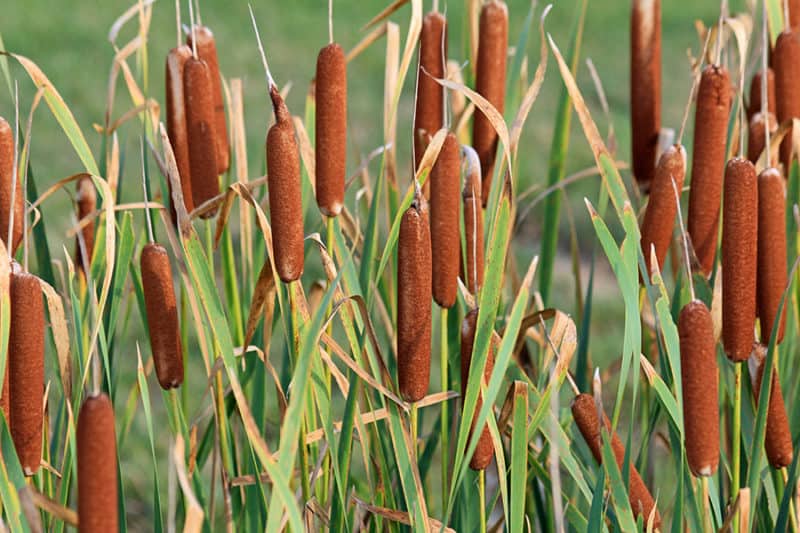
This plant grows with its roots submerged underwater and its stem growing up to 9 feet above the water. Birds and other wildlife love to hide and feed among the rushes, and the stalks turn brown in the winter, topped with cigar-shaped heads, adding visual interest to the garden. You can snip the heads off for decorative uses.
The roots help remove pollutants from water, and they also filter decomposed matter from other water plants, so they’re an important part of a water garden ecosystem.
- Zones: 3-11
- Scientific name: Cattail Typha Latifolia
- Size: 7-9 feet tall
- Sun:
19. Pitcher Plant
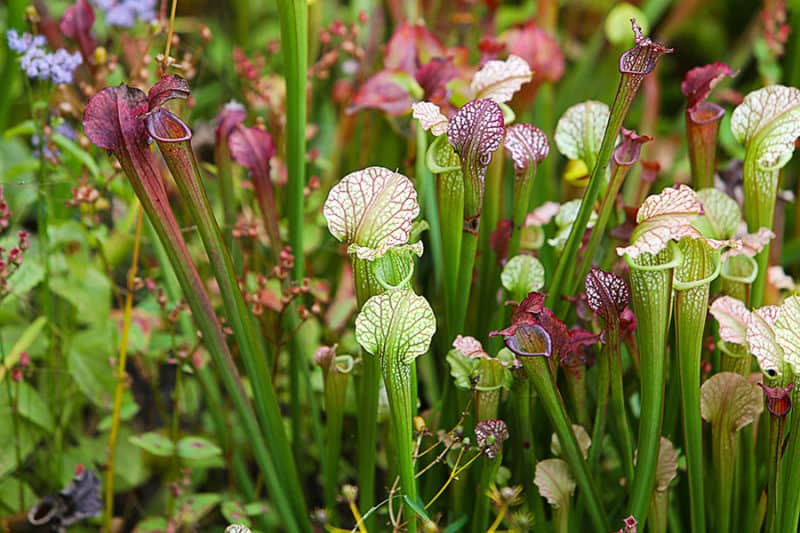
Pitcher plants look tropical, but they’re actually native to the U.S. They’re a blast to have in a water garden because they’re carnivorous. The tubes of the plant act as traps for insects and small animals. There are a wide variety of pitcher plants suited to a range of zones, from cooler Canadian climes to sweltering Floridian locations.
- Zones: 2-9
- Scientific name: Nepenthes
- Size: 5-feet tall
- Sun: Full sun to light shade
20. Rain Lily
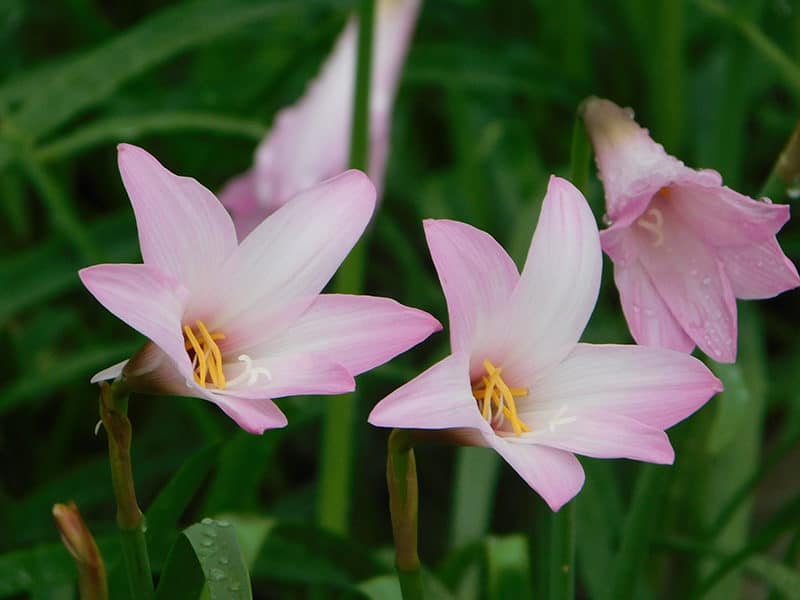
Also known as rain flower, fairy lily, or zephyr lily, the rain lily plant looks a lot like a crocus, but they bloom in the summer and not the early spring. It has grassy, green foliage and blossoms that range from white or coral to pink or deep violet.
- Zones: 7-11
- Scientific name: Zephyranthes
- Size: 3-18 inches tall
- Sun: Full
21. Papyrus
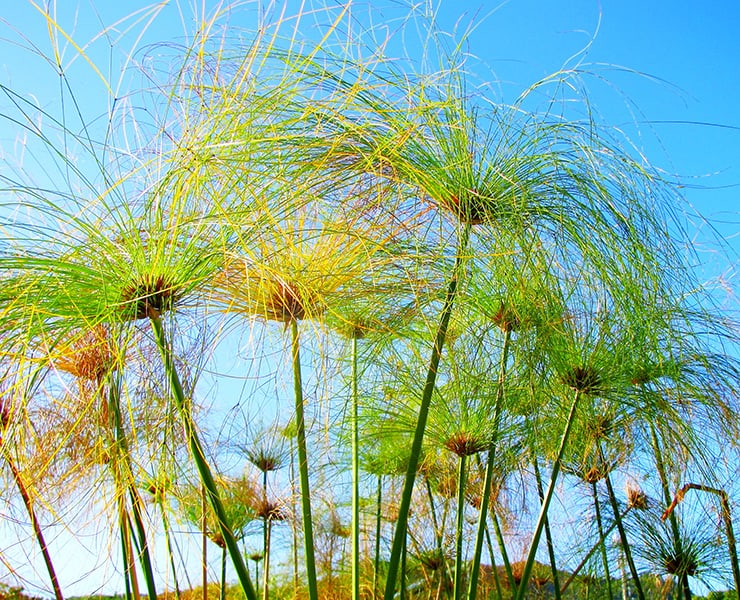
This is the same plant that was used by ancient civilized Egyptians to make paper and woven goods. It’s also known as umbrella plant or bulrush. It features tall stalks topped with umbrella-like spokes of foliage at the top. Depending on the variety and location, it’s a self-seeding annual or half-hardy perennial.
- Zones: 8-19
- Scientific name: Cyperus papyrus
- Size: Up to 10 feet tall
- Sun: Full sun to partial shade
22. Taro
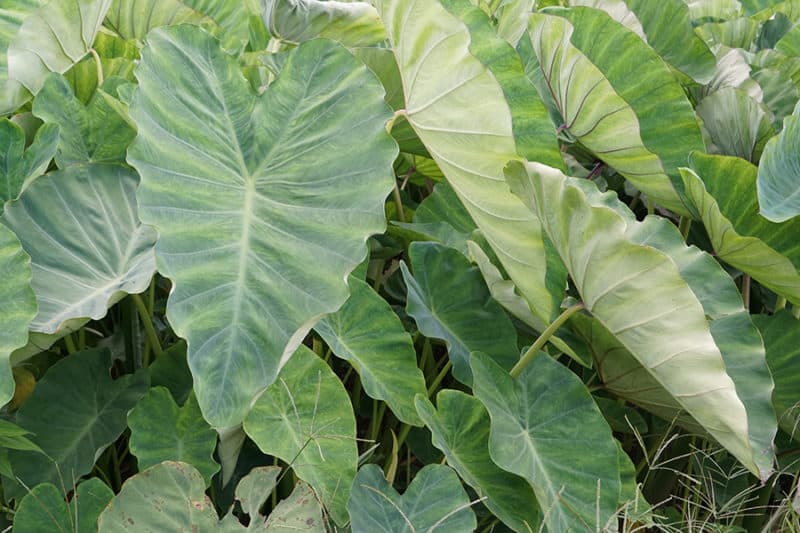
The bold leaves of the taro plant add visual interest to the margins of your pond. They don’t like strong winds, so give them some protection, and you’ll be rewarded with massive leaves that resemble an elephant ear. It’s commercially grown as a food crop in Hawaii.
- Zones: 8-10
- Scientific name: Colocasia esculenta
- Size: 3-6 feet tall and wide
- Sun: Full sun to part shade
23. Japanese Primrose
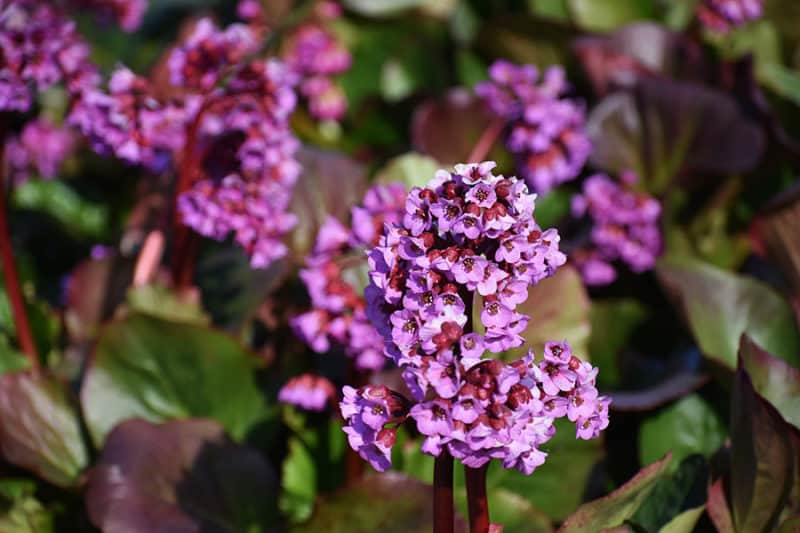
Japenese primrose, also known as Japanese cowslip or candelabra primrose, can handle boggy soils, but it prefers well-drained soil. Add it to the outer areas of your water garden for its tall, showy pink, purple, and red flowers. It attracts butterflies.
- Zones: 4-8
- Scientific name: Primula japonica
- Size: 2-feet tall by 1-foot wide
- Sun: Full sun to partial sun
Outdoor Submerged Water Plants
Submerged plants create oxygen during the day, which is released directly into your pond. They provide cover for fish and grow completely underwater, rooting to the bottom of the pond.
24. Hornwort
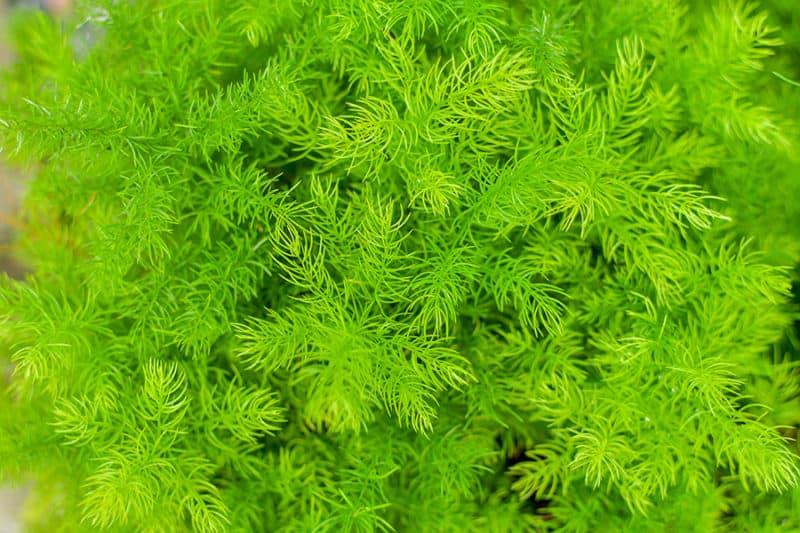
This is by far my favorite submerged plant. It floats just above the bottom and it doesn’t root or require a basket. Hornwort – aka coontail – grows to the surface and is a top-notch oxygenator. If you’re a beginner, I highly recommend this easy-to-manage plant.
- Zones: 3-11
- Scientific name: Ceratophyllum demersum
- Size: 1.5-inches tall, 24-inches wide
- Sun: Full shade to full sun
25. Anacharis

Use this on any size pond, but make sure you have at least a few inches of water depth. The greenery grows to the surface, and it blooms with white flowers. If you have a tiny pond, you’ll need to plant anacharis, also known as elodea, in little pots because, uncontained, it will fill space rapidly.
- Zones: 6-10
- Scientific name: Elodea
- Size: 6-inches tall to 10 feet wide
- Sun: Full sun to full shade
26. Water Clover
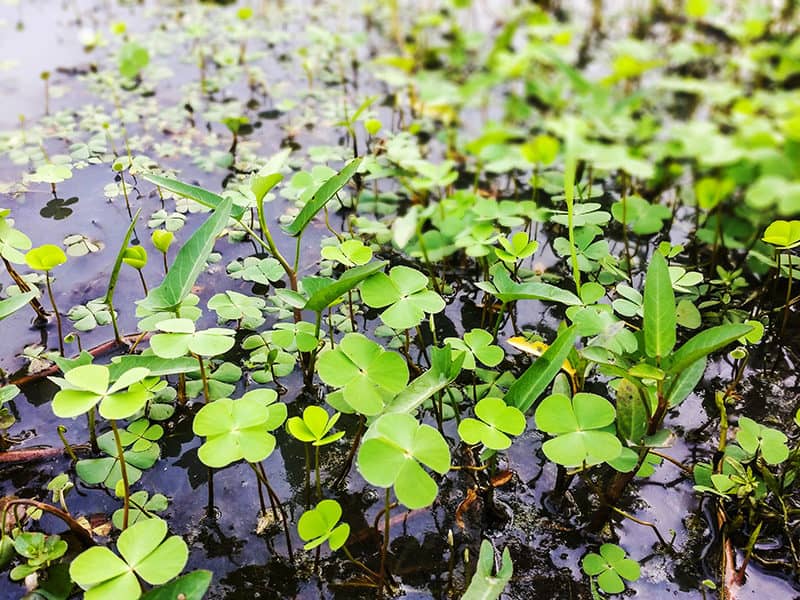
This plant is native to parts of the U.S., including Texas, Alabama, Florida, and Louisiana. Water clover is an aggressive spreader, so thin it out often.
- Zones: 5-11
- Scientific name: Marsilea macropoda
- Size: 10-inches tall
- Sun: Full sun to full shade
27. Water Lotus
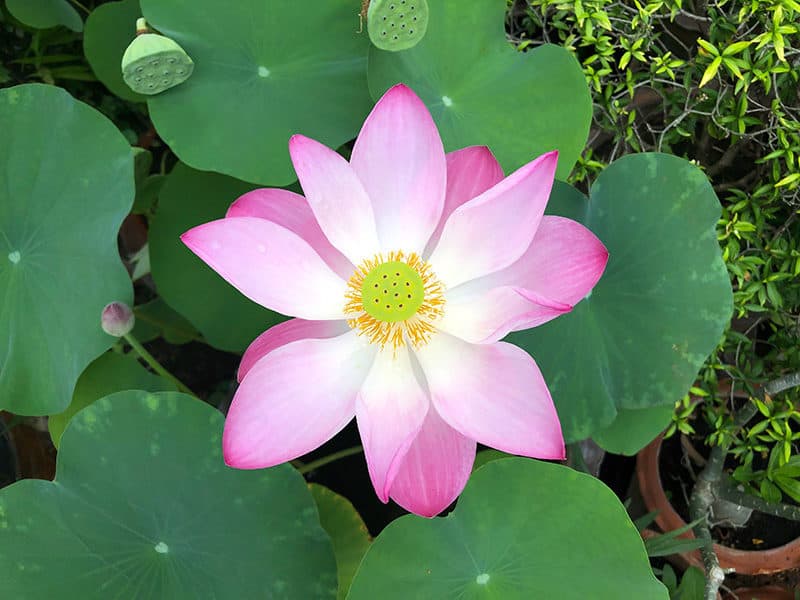
This plant is an exotic, dramatic addition to any water garden. It needs plenty of warmth to thrive and does best with about 6 hours of sun a day. If its needs are met, you’ll get large, colorful blossoms in the summer and continuing into the fall. The flowers close up at night and are fully open during the warmest parts of the day. One blossom lasts about 5 days.
Even when they aren’t blooming, the massive leaves are beautiful on their own.
- Zones: 4-10
- Scientific name: Nelumbo lutea
- Size: 18-60 inches tall and up to 6-feet wide
- Sun: Full sun to partial shade
Indoor Water Plants
If you have a pond or large aquarium indoors, there are oodles of good water plants available. Some outdoor plants, like parrot’s feather, hornwort, water hyacinth and water fern, will also thrive indoors.
28. Calla Lily
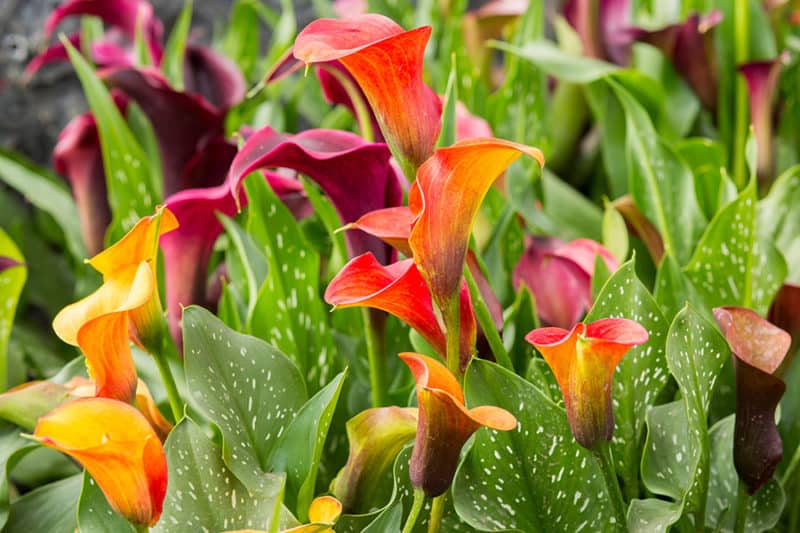
Calla lily doesn’t mind wet feet, but it doesn’t like to be fully submerged. The plant has pretty white blossoms – which are actually modified leaves. You can take calla lilies outdoors during the summer and grow them inside during the cooler months.
- Scientific name: Zantedeschia aethiopica
- Size: 24-36 inches tall
- Sun: Full sun to partial shade
29. Duckweed
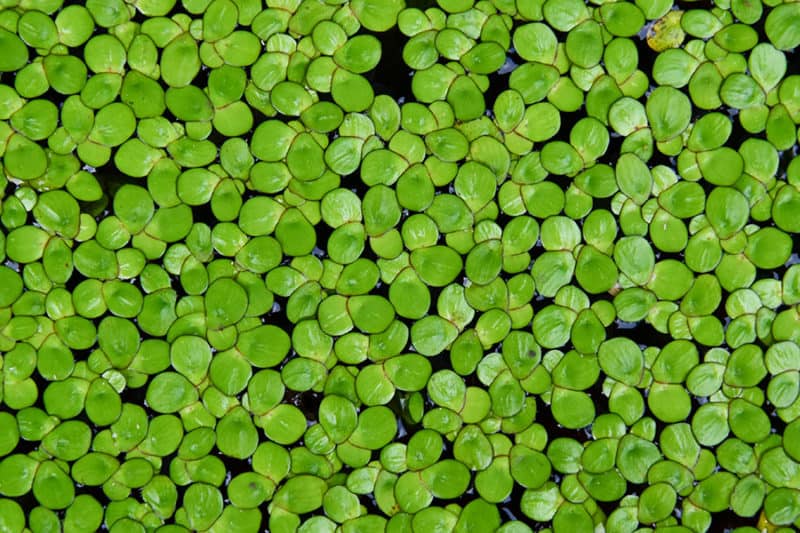
Waterfowl and fish love to nibble on this pretty little plant, which is also known as water lentils. This plant needs a lot of nutrition, especially nitrogen, which can be supplied by fish waste or chicken coop leavings. It doesn’t like moving water.
- Scientific name: Lemnaceae
- Size: Under 1/2-inch tall
- Sun: Full sun to moderate shade
30. Water Spangle
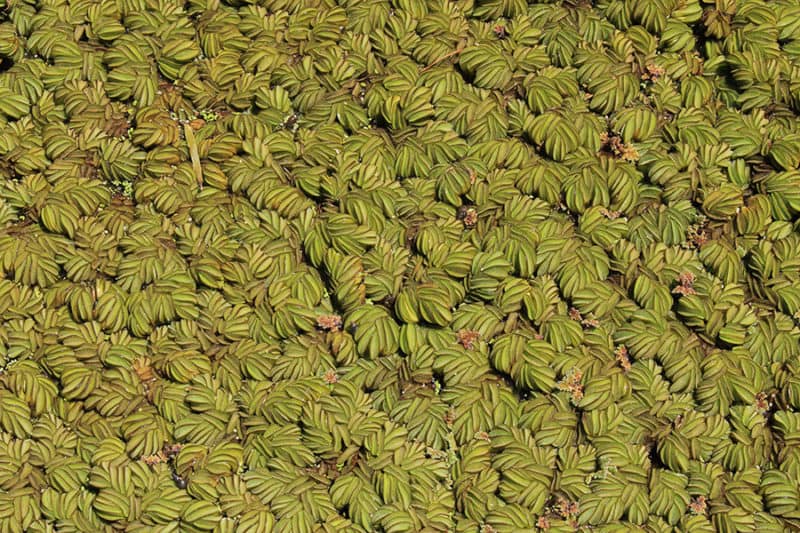
This plant – also known as mini water velvet and common salvinia – is especially handy in aquariums where you want to block the sunlight to prevent algae growth because it forms dense mats on the water’s surface. It can be invasive, so you’ll have to keep it under control once it gets established.
- Scientific name: Salvinia minima
- Size: 24-36 inches tall
- Sun: Full sun to partial shade
The Final Word On Water Plants
Water plants can be a little daunting if you’ve never grown them before, but most garden stores have a specialist who will give you plenty of advice. My best tip is to start small with just a few different plants to get used to the needs, their habits and growth pace.
Introduce fish – if that’s your plan – when you have the plants sorted and you’re sure the water is balanced and healthy.
Water plants add color, texture, and health to your water feature. They provide food, shelter, and oxygen to fish, and they improve the aesthetics of your entire space. It’s worth the effort, so don’t be afraid to get planting.
